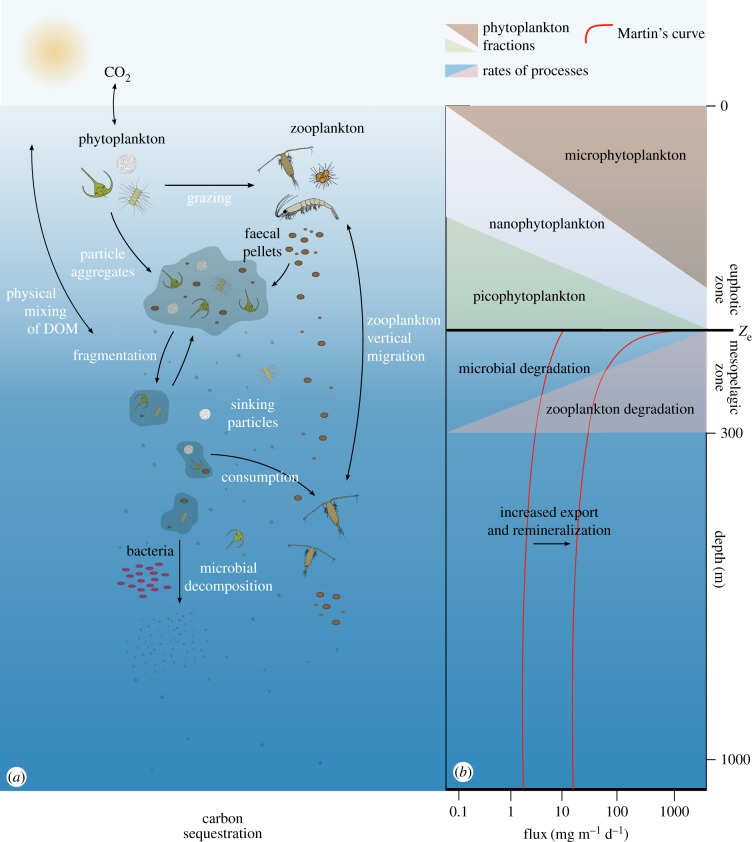Figure 2.
The biological carbon pump in the ocean. (a) Inorganic atmospheric carbon (CO2) is transformed into organic carbon by phytoplankton in the euphotic zone. This carbon is then grazed on by heterotrophic organisms. A fraction of it is exported out of the surface layer as particulate organic carbon (such as dead organic material, faecal pellets produced by the zooplankton and aggregates of these materials) that sinks in the water column. Two other major processes help with the transfer of carbon below the surface layer: physical mixing of dissolved organic material (DOM) and transport by zooplankton vertical migration. (b) Different processes that can affect the decrease in the flux of particles in the ocean (adapted from [21]). The dimensions of the different areas represent the relative importance of phytoplankton fractions or rates of processes. The variation of the estimated flux with depth was modelled by fitting the Martin power relationship [22]. Carbon export is influenced by the phytoplankton composition in the euphotic zone: export is high when microphytoplankton (including diatoms) dominate the plankton community in the euphotic zone, while low export values correspond to systems dominated by picophytoplankton. Ze = depth of the euphotic zone. Note that depth, organisms and particle sizes are not to scale.

